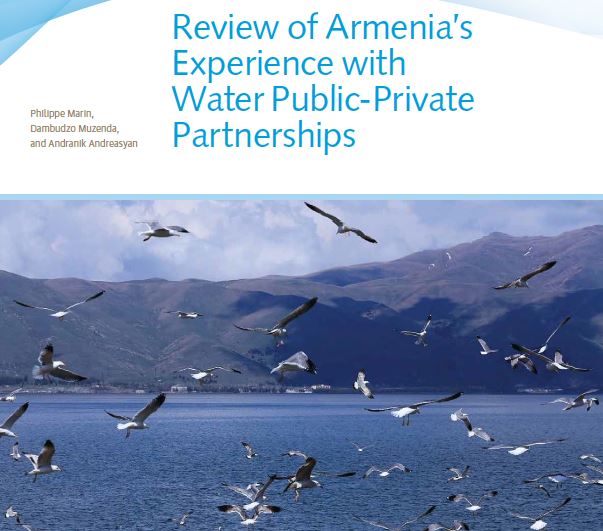Review of Armenia’s Experience with Water Public-Private Partnerships
Armenia’s 16 years of experience with public-private partnerships (PPPs) in the water sector is a rich illustration of how partnering with private operators in a well thought out manner can improve water services in a developing country. The government took a phased and cautious approach to the PPP reform, gradually increasing the geographical scope of the PPPs as well as the level of transfer of risks to private operators. It began in 2000 with a 5-year management contract in the capital city Yerevan, and in 2006 transitioned to a more complex, 10-year lease contract in Yerevan, while initiating additional management contracts to manage water services in secondary cities and towns in the rest of the country. The decade following independence from Soviet rule in 1991 saw the introduction of liberal, market-oriented policies but the needs of the water sector remained largely unaddressed. By 2000, 60 percent of the water mains and connections in Yerevan were 30 to 40 years old and in very bad shape, a situation exacerbated in Yerevan and Shirak by the impact of the devastating 1988 earthquake on the distribution network. The average daily water supply in 1998 was 6 hours in most parts of the country, including Yerevan, and breakdowns in supply were common. Tariffs covered only 30 percent of operations and maintenance (O&M) costs and central budget allocations had to fill the gap. There were also administrative and managerial gaps within the water utilities, namely Yerevan Water and Sewerage Enterprise (YWSE),1 Armenia State Water Company (ASWC),2 and municipal utilities in the regions of Nor Akunq, Shirak, and Lori. Recognizing the challenges and limitations of public service provision, the government of Armenia decided to introduce private sector participation, starting with Yerevan in 2000.
